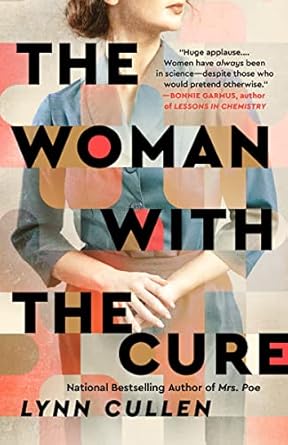🧬 Book Review: The Woman with the Cure by Lynn Cullen
A powerful, emotionally resonant historical novel that shines a light on a forgotten heroine of science—Dr. Dorothy Horstmann—and her quiet but pivotal role in the race to cure polio.
Lynn Cullen’s The Woman with the Cure is a fictionalized account of real-life epidemiologist Dorothy Horstmann, whose groundbreaking research helped pave the way for the development of the polio vaccine. With a solid Goodreads rating of 3.93/5 from over 4,500 readers, the novel is praised for its compelling subject matter, rich historical detail, and thoughtful portrayal of a woman who changed the world—without ever seeking the spotlight.
🧠 Plot Overview
Set in 1940s and ’50s America, the story unfolds during a time when polio was as feared as the atomic bomb. Cities locked down during outbreaks, and children were especially vulnerable. While the world’s top scientists raced to develop a vaccine, Dorothy Horstmann focused on understanding the virus itself—tracking it not in the spinal cord, as many believed, but in the bloodstream, a discovery that would prove crucial.
As she navigates a male-dominated field, Dorothy faces professional rivalry, ethical dilemmas, and personal sacrifice. When a colleague’s error gives him an edge in the vaccine race, Dorothy must decide whether to validate his work or protect her own integrity. Her choice could determine the fate of millions.
💬 Why Readers Are Hooked
- Unsung Heroine: Dorothy’s story is one of quiet brilliance and perseverance, offering a refreshing counterpoint to more flamboyant historical figures.
- Historical Relevance: The novel resonates in a post-pandemic world, drawing parallels between past and present public health crises.
- Ethical Complexity: Themes of ambition, sacrifice, and scientific integrity give the story emotional and intellectual weight.
- Evocative Writing: Cullen’s prose is elegant and immersive, capturing both the urgency of the era and the internal struggles of her protagonist.
⚠️ Critiques
Some readers felt that Dorothy’s character was emotionally distant, with her inner life told rather than shown. The third-person narration may have created a barrier to deeper connection, and secondary characters—especially male colleagues—were seen as one-dimensional. The romantic subplot was also noted as underdeveloped.
📣 Notable Praise
“She gave up everything—and changed the world.” — Goodreads summary
“A riveting novel based on the true story of the woman who stopped a pandemic.” — BookBrowse
🏁 Final Verdict
The Woman with the Cure is a moving tribute to a brilliant woman whose contributions to science deserve far more recognition. If you enjoy historical fiction that celebrates overlooked pioneers and explores the human side of scientific discovery, this novel is a must-read.


